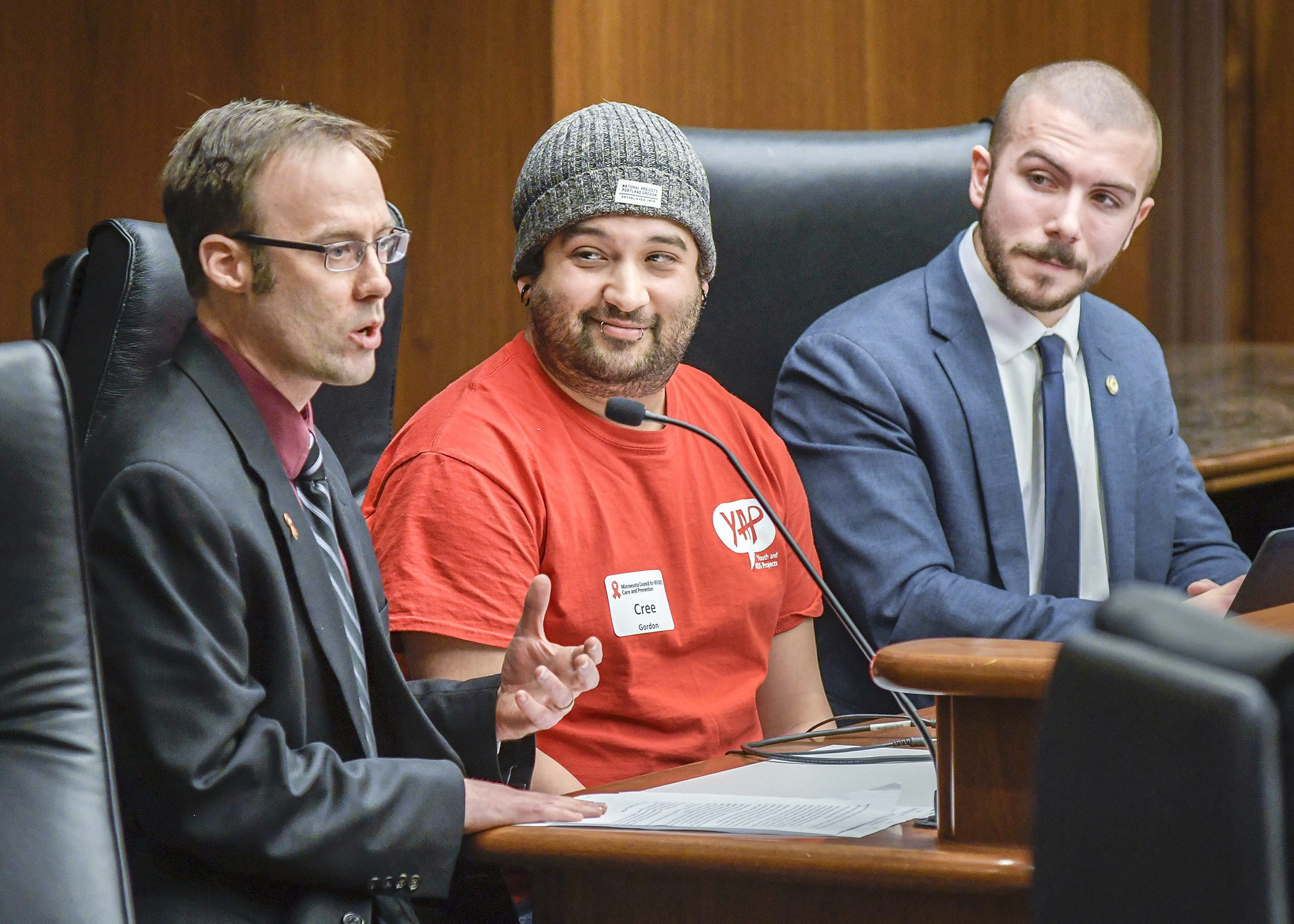More funding could allow Minnesota to beat HIV/AIDS, lawmakers hear

Despite great advances in the prevention and treatment of HIV and AIDS, new cases are still identified in Minnesota each year.
HF269, sponsored by Rep. Hunter Cantrell (DFL-Savage), would provide $1 million in grant funding for HIV prevention initiatives in Fiscal Years 2020 and 2021.
The House Health and Humans Services Finance Division laid the bill over, as amended, Tuesday for possible inclusion in the division bill.
A companion, SF203, is sponsored by Sen. Jeff Hayden (DFL-Mpls) and awaits action by the Senate Health and Human Services Finance and Policy Committee.
As of 2017, more than 8,700 Minnesotans live with HIV or AIDS. The hardest-hit populations are historically marginalized communities including gay and bisexual men, transgender people, injection drug users, people of color and Native Americans, said Kristen Ehresmann, director of Infectious Diseases and Epidemiology at the Department of Health.
Of the 284 new infections identified in 2017, 109 were people under the age of 30, said Cree Gordon, PrEP outreach and HIV testing coordinator for the Youth and AIDS Project.
But if people can be connected to care within 30 days of a new diagnoses, they will be at a lower risk of developing AIDS or transmitting the virus, Ehresmann said.
Antiretroviral therapy decreases the amount of the virus in the bodies of people living with HIV to undetectable levels and can reduce the risk of transmission by as much as 96 percent, she said.
Other prevention options available include pre-exposure prophylaxis – also known as PrEP – a daily pill that can be taken by at-risk people without HIV in order to prevent infection. Post-exposure treatment is also available to reduce the risk of infection, Ehresmann said.
There isn’t a cure for HIV or AIDS, and consistent, lifelong treatment is needed. But people can struggle to sustain treatment or reach viral suppression due to factors including inadequate access to care, poverty, criminalization, and racism, testifiers said.
Clients of the Youth in AIDS Project are usually wrestling with many problems other than possible HIV infection, Gordon said. They are also usually dealing with poverty, homelessness, substance abuse, trauma, or other hardships.
Increased state funding would allow prevention workers to be more innovative in how they’re reaching this population, Gordon said.
“We can once and for all end AIDS,” said Matt Toburen, director of public policy for JustUs Health.
Minnesota organizations have “the know-how and tools” to accomplish the goals set out in The Minnesota HIV Strategy signed into law May 2017, but they lack resources, he said.
State funding for prevention efforts has remained flat since 1998, and prevention funding from the Centers for Disease Control and Prevention has dropped 40 percent over the last seven years, Toburen said.
Related Articles
Search Session Daily
Advanced Search OptionsPriority Dailies
Ways and Means Committee OKs proposed $512 million supplemental budget on party-line vote
By Mike Cook Meeting more needs or fiscal irresponsibility is one way to sum up the differences among the two parties on a supplemental spending package a year after a $72 billion state budg...
Meeting more needs or fiscal irresponsibility is one way to sum up the differences among the two parties on a supplemental spending package a year after a $72 billion state budg...
Minnesota’s projected budget surplus balloons to $3.7 billion, but fiscal pressure still looms
By Rob Hubbard Just as Minnesota has experienced a warmer winter than usual, so has the state’s budget outlook warmed over the past few months.
On Thursday, Minnesota Management and Budget...
Just as Minnesota has experienced a warmer winter than usual, so has the state’s budget outlook warmed over the past few months.
On Thursday, Minnesota Management and Budget...